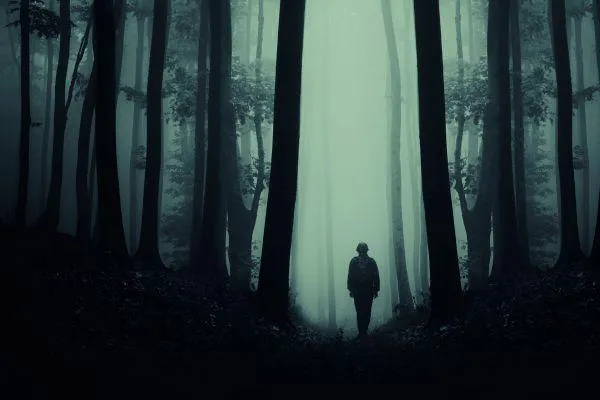
10 Locations that Set the Scene in Found Footage Films
In real estate, it’s all about "location, location, location," and guess what? The same rule applies to found footage films. The setting of these films isn’t just a backdrop—it’s a character in its own right, adding layers of dread and unease that keep us on the edge of our seats. So, let’s dive into the creepy, the claustrophobic, and the downright terrifying locations that make found footage films the stuff of nightmares.

1. The Spooky Woods: A Classic for a Reason
Ah, the woods. A staple of found footage horror. It’s dark, it’s disorienting, and every tree looks the same. "The Blair Witch Project" practically wrote the book on how to turn a serene forest into a labyrinth of terror. The isolation and the inability to see what’s lurking just beyond the next tree create a primal fear that taps into our caveman instincts. If a branch snaps in the woods and no one is around to hear it, does it still scare the crap out of you? Yes, yes it does.
2. The Abandoned Building: Urban Exploration Gone Wrong
There’s nothing quite like an abandoned asylum, hospital, or factory to set the mood. These places come with built-in creepiness: peeling paint, broken windows, and a sense of forgotten history. Films like "[REC]" and "Grave Encounters" use these settings to great effect, turning mundane urban exploration into a descent into madness. Just remember, if the sign says “Do Not Enter,” it’s probably best to turn around. Or, if you’re in a found footage film, definitely enter and start recording.
3. The Haunted House: Home Sweet Home?
Who needs fancy effects when you have a creaky old house? "Paranormal Activity" and "The Taking of Deborah Logan" prove that the scariest things can happen in the most familiar places. The haunted house setting is effective because it invades the place where you’re supposed to feel safest. Those creaks and groans aren’t just your house settling—they’re something far more sinister. Next time your floorboards creak at night, just remember, it’s probably just the wind. Or a ghost. Definitely a ghost.
4. The Remote Cabin: Isolation at Its Finest
If the woods are scary, then a cabin in the woods is nightmare fuel. Traditional films may have popularized this trope, but found footage films have taken it and run with it. A remote cabin provides isolation, limited resources, and no easy escape—perfect for ratcheting up the tension. Plus, cabins usually come with the added bonus of questionable cell service. Because let’s be real, horror and a working phone signal just don’t mix.
5. The Open Ocean: Water, Water Everywhere
Not all found footage films stick to land. Some take the terror to the open ocean or other bodies of water. "The Bay" uses the unpredictability of the ocean to their advantage. There’s something inherently terrifying about the unknown lurking beneath the surface, or being surrounded by endless water with no land in sight. It’s like a wet, salty version of the abyss. Pro tip: next time you go scuba diving, maybe skip the found footage films about shark attacks.
6. The Everyday Urban Environment: Close to Home
Sometimes, the most terrifying settings are the ones closest to home. "Cloverfield" shows that even a bustling city can become a horror show. The contrast between the ordinary and the extraordinary makes these films all the more unsettling. One minute you’re enjoying a rooftop party, the next, a giant monster is destroying the city. It’s this juxtaposition that makes urban settings so effective—turning the familiar into the frightening.
7. The Digital Realm: Welcome to the Web
In our modern, tech-driven world, it’s no surprise that found footage horror has moved into the digital realm. Films like "Searching" and "Invited" take place entirely on computer screens, using webcams and social media to tell their stories. This setting is particularly effective because it’s so relatable—who hasn’t had a creepy experience online? It’s like inviting the horror into your own home, but through your laptop. Just remember, when the Zoom call gets creepy, it’s time to log off.
8. The Claustrophobic Spaces: Tight Squeezes
If you’re not a fan of tight spaces, found footage films set in claustrophobic environments will have you squirming in your seat. "As Above, So Below" uses narrow tunnels and confined spaces to create intense fear and anxiety. The lack of escape routes and the feeling of being trapped amplify the terror. It’s enough to make you rethink that spelunking trip you’ve been planning.
9. The In-Between: Liminal Spaces
Liminal spaces—those eerie, in-between places like empty hallways, stairwells, and deserted lobbies—are perfect for found footage horror. They feel off because they’re familiar yet devoid of the usual hustle and bustle, creating a sense of dislocation and unease. It’s like wandering through a nightmare where nothing feels quite right.
10. The Wilderness: Nature’s Terror
Finally, let’s not forget the vast, uncharted wilderness. "Willow Creek" take us deep into nature, where help is miles away, and the environment itself becomes a character. The wilderness is unpredictable and unforgiving, making it the perfect setting for horror. It’s beautiful by day and terrifying by night, proving that sometimes, the most frightening things are found in nature.
In found footage films, the location isn’t just a backdrop—it’s a vital component of the story. Whether it’s the eerie woods, an abandoned building, or the vast ocean, the setting adds layers of fear and tension that keep us glued to our screens. So next time you watch a found footage horror film, pay attention to the location. It’s more than just a place—it’s the heart of the horror.

